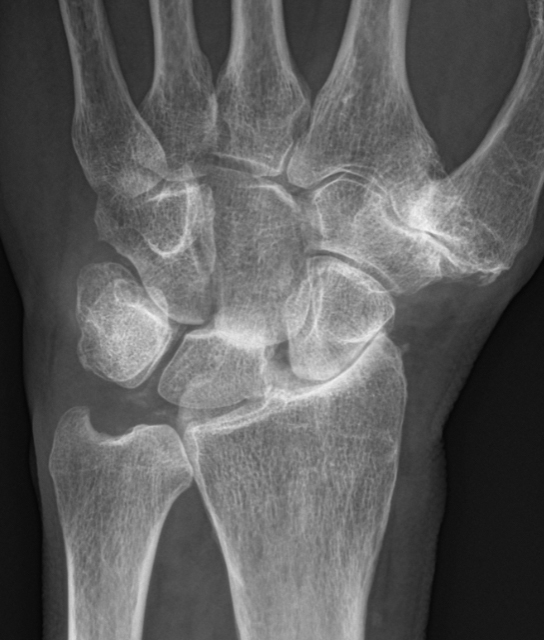Wrist Denervation
What is a wrist denervation procedure?
A wrist denervation procedure is a surgery where small terminal branches of nerves are severed, excised and cauterized to help alleviate pain in patients with arthritis of the wrist.
The original anatomic dissections were performed by the German anatomist Nikolaus Rudinger in the 1800’ s when he described “the articular nerves of the human body.” What he demonstrated was that there are terminal branches of many nerves that supply the deep and arthritic pain fibers to all joints. These nerve branches themselves do not supply feeling to the skin or innervation of muscles. Therefore, severing these nerves simply alleviate pain without affection function. It wasn’t until the 1960’s that surgeons started performing denervation procedures and recently, this surgery has been performed more frequently to avoid more extensive bone procedures.
Why is a wrist denervation procedure performed?
A wrist denervation procedure is performed to alleviate pain in an arthritic wrist. Osteoarthritis, the most common form of arthritis, occurs due to loss of articular cartilage. This loss of cartilage allows for bone-on-bone contact which leads to inflammation. The inflammatory cells are in the synovium and capsule of the affected joint. The wrist capsule, as with other joints, contains nerve fibers that send pain signals back to the brain. This causes the patient to feel pain in the joint. It is this pain that limits function and strength. If it is painful to lift or twist an object, the brain tells you not to do it resulting in the feeling of weakness. If moving the wrist through a certain range of motion causes pain, the brain will tell the patient not to do it. A good analogy is having a pebble in your shoe. When you walk on it, it causes pain, so you do not put weight on that foot. No matter how hard you try, your brain will not let you run or fully load your foot.
The goal of a wrist denervation procedure is to remove those deep arthritis pain fibers in the wrist. To be clear, this does not affect the feeling of the wrist or skin. It does not affect any motor or muscle fibers. It simply takes away the deep pain that limits function. Additionally, patients can feel pain and proprioception, they simply have significantly diminished pain. All of pain fibers are not removed. The deep pain fibers in the area of arthritis are selectively removed.
A wrist denervation procedure is done as an alternative to more invasive bone procedures. For example, in some arthritis of the wrist, partial wrist fusions are performed. These are very effective procedures and do give long lasting pain relief. However, they are more invasive and require more rehabilitation. A wrist denervation procedure may allow the patient to avoid this more extensive procedure. The denervation procedure does not prevent the patient from having these more extensive procedures in the future if necessary.
How do we determine who is a candidate for a wrist denervation procedure?
The patient is examined in the office and X-rays are reviewed. The patient’s specific lifestyle and needs are discussed and shared decision making between the surgeon and the patient is made. Typically, a diagnostic lidocaine injection is performed in the office, anesthetizing the specific nerves. The patient is examined before and after the injection to see if the lidocaine brings pain relief with activities. This is called a diagnostic injection. If the patient has significant pain relief, they may be a candidate for a wrist denervation procedure. The advantage of this is that the patient understands at that moment what type of pain relief they may achieve.
Image Caption: Patient with severe radoiocarpal arthritis. Patient had a positive response to diagnostic injection and was a good candidate for wrist denervation procedure
How is a wrist denervation procedure performed?
The surgery is done as an outpatient procedure under a regional or light general anesthesic. The exact nerves that are removed depends on the type of arthritis the patient has. Small incisions are made to isolate the nerves. The nerves are cauterized and excised. The patient may have wrist arthroscopy at the same time to clean out debris in the wrist. After surgery patients are placed in a soft dressing or light splint. They are seen 5-7 days after surgery and therapy is started. Since the procedure is so precise and no muscles are affected, the rehabilitation is often fast. Patients are allowed to resume normal activity as soon as they are able which is typically 3-4 weeks.
At a Glance
Dr. Kavi Sachar
- Specializing in Hand, Wrist, & Elbow Surgery
- Board Certified Orthopedic & Hand Surgeon
- Consultant to the US Ski & Snowboard Team & Colorado Avalanche
- Learn more



